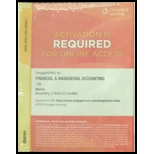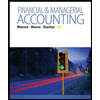
1.
Cash dividends: The amount of cash provided by a corporation out of its distributable profits to its shareholders as a return for the amount invested by them is referred as cash dividends.
Common stock: These are the ordinary shares that a corporation issues to the investors in order to raise funds. In return, the investors receive a share of profit from the profits earned by the corporation. The dividend payments are not guaranteed and are paid after the payment made to the preferred stockholders.
Preferred stock: The stock that provides a fixed amount of return (dividend) to its stockholder before paying dividends to common stockholders is referred as preferred stock.
A preferred stock may be cumulative and non-cumulative. A cumulative preferred stock implies that a preferred stockholder is entitled to receive dividends for the current year plus any unpaid dividends of the previous years, before the dividends paid to the common stockholders.
Dividend per share:
Dividend per share represents the amount of dividend paid to each shareholders of the business.
To determine: The total dividends and the amount of dividends declared per share for preferred and common stock for each of the six years.
2.
The average annual dividend per share for each class of stock for the six-year period.
3. (A)
The average annual percentage return on initial stockholders’ investment, based on the average annual dividend per share for (A) preferred stock and (B) common stock.
(B)
The average annual percentage return on initial stockholders’ investment, based on the average annual dividend per share for (A) preferred stock and (B) common stock.
Want to see the full answer?
Check out a sample textbook solution
Chapter 11 Solutions
CengageNOWv2, 2 terms Printed Access Card for Warren?s Financial & Managerial Accounting, 13th, 13th Edition
- Please explain the solution to this general accounting problem using the correct accounting principles.arrow_forwardWhich principle determines transfer pricing for intercompany inventory moves? I. Cost plus reasonable markup II. Arm's length market price III. Historical cost only IV. Lower of cost or market. Provide answerarrow_forwardWatson Advisors is a consulting firm. The firm expects to have $75,000 in indirect costs during the year and bill customers for 6,000 hours. The cost of direct labor is $95 per hour. Calculate the predetermined overhead allocation rate for Watson Advisors.arrow_forward
- What is the net profit?arrow_forwardJulia Parker works in a local bookstore where she sells books for $195.60 each. If she maintains a markup of 35.7% on the selling price, what is the cost of a book to Julia? (Accounting Problem) Correct Answerarrow_forwardI am trying to find the accurate solution to this general accounting problem with the correct explanation.arrow_forward
- Hello. Provide Answer With Correct Solution If you are not sure than skip and Ai Contant No Allowed I give Dislike if Provide AiSolution or Wrong Solution Give Carefull Answerarrow_forwardPlease provide the answer to this general accounting question using the right approach.arrow_forwardNet profit?arrow_forward
 Financial AccountingAccountingISBN:9781305088436Author:Carl Warren, Jim Reeve, Jonathan DuchacPublisher:Cengage Learning
Financial AccountingAccountingISBN:9781305088436Author:Carl Warren, Jim Reeve, Jonathan DuchacPublisher:Cengage Learning Financial & Managerial AccountingAccountingISBN:9781285866307Author:Carl Warren, James M. Reeve, Jonathan DuchacPublisher:Cengage Learning
Financial & Managerial AccountingAccountingISBN:9781285866307Author:Carl Warren, James M. Reeve, Jonathan DuchacPublisher:Cengage Learning Excel Applications for Accounting PrinciplesAccountingISBN:9781111581565Author:Gaylord N. SmithPublisher:Cengage Learning
Excel Applications for Accounting PrinciplesAccountingISBN:9781111581565Author:Gaylord N. SmithPublisher:Cengage Learning College Accounting, Chapters 1-27AccountingISBN:9781337794756Author:HEINTZ, James A.Publisher:Cengage Learning,Principles of Accounting Volume 1AccountingISBN:9781947172685Author:OpenStaxPublisher:OpenStax College
College Accounting, Chapters 1-27AccountingISBN:9781337794756Author:HEINTZ, James A.Publisher:Cengage Learning,Principles of Accounting Volume 1AccountingISBN:9781947172685Author:OpenStaxPublisher:OpenStax College Intermediate Accounting: Reporting And AnalysisAccountingISBN:9781337788281Author:James M. Wahlen, Jefferson P. Jones, Donald PagachPublisher:Cengage Learning
Intermediate Accounting: Reporting And AnalysisAccountingISBN:9781337788281Author:James M. Wahlen, Jefferson P. Jones, Donald PagachPublisher:Cengage Learning





